Something is wrong?
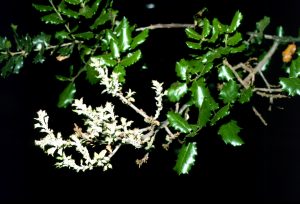
Do you ever have a feeling that there is something wrong with a plant? It’s just not healthy looking, or it has not grown for awhile? As we discussed in the last blog, disease is a process–it occurs over time. When in the disease time-line you notice the process, can be quite varied. Some astute gardeners may know something is wrong before there are symptoms, others may not take notice of the process until the plant is dead. Your disease detection acuity, or disease intellect, is largely dependent on your ability to recognize when the disease process is happening. Early recognition gives you a chance to interrupt or limit the progress of disease or “control” it. This blog is all about enhancing your disease detection acuity. In the last of the series, I will cover what we can do about plant diseases, their prevention and control.

Symptoms and signs
Plants respond to challenges from a disease agent by producing symptoms. Symptoms are physiological changes in plants which we can see. Yellowing leaves, necrotic (dead) areas of leaves, stems, flowers or roots are common for many diseases. Some symptoms are very subtle. Slowed growth may be the first symptom of a systemic disease that is spreading within a plant’s vascular system or destroying its roots. Some plants can have 75% of their roots killed by pathogens without any visible symptoms on foliage. Most of the time when symptoms are this subtle, the plant is not growing at the same rate it would if it were healthy. Absence of new foliage, short internodes (distance between leaves), lack of initiation of flowers can all be symptoms of disease. Another subtle symptom is an overall color change that takes away a Plant’s “brightness” or healthy glow. I think most gardeners recognize this, but may not associate color dullness with disease. When subtle symptoms are detected, it is always a good idea to check the roots to see if they are functional (not rotted).
Overt symptoms are easy to distinguish. Fire blight is a good example—the bacterium Erwinia amylovora is spread by bees to flowers where it invades the floral nectaries. Bacteria migrate into shoots and stems and turns them pure black.
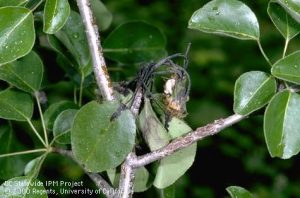
The disease proceeds rapidly in springtime during bloom and the symptoms (necrosis) are striking. Blights, anthracnose diseases, and canker diseases all produce necrotic tissue symptoms that are easily distinguished from healthy tissues. Even root rot is overt if you take the time to look at the roots!
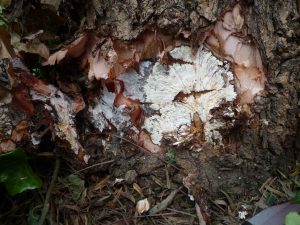
Signs are the causal agents of symptoms. Fungal hyphae (collectively mycelium) growing under bark or on plant surfaces are easily observable signs. Just like symptoms, signs can be overt or cryptic. Armillaria mushrooms form in large clusters around the bases of infected trees and are easily identified, but the fruiting bodies of canker diseases (pycnidia) are very small and look like small pepper granules on the surface of a dead twig or branch. Plants often form galls (a symptom) that form around insects or bacterial pathogens (signs). Observing plants carefully to look for signs can be quite diagnostic. For instance if you observe the symptom of distorted new growth on your grape or rose and then carefully examine the tissue with a hand lens you may find the sign of mycelium from powdery mildew. Symptoms often develop after signs and many signs only form in the dead tissue or after the disease has produced much damage.
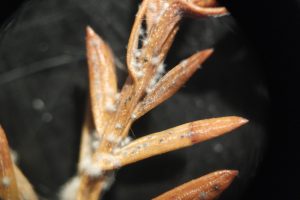
Since signs are often reproductive structures of a pathogen, they are very helpful in pathogen identification. Many microbes have signs and cause significant disease but their signs are microscopic and thus hard
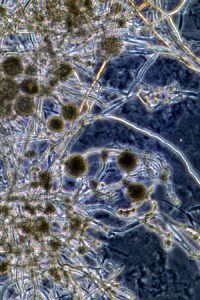
to observe. The mycelium and spores of many Phytophthora spp. that cause root rot of trees, crops and flowers are invisible in-situ. They can only be visualized by isolation in the lab.
Internet searches and labs
So you have observed symptoms, you think you have signs but are not sure. What next? There are thousands of plant diseases, and we see new diseases at an ever increasing rate as we explore growing new plants in new places. Accurate disease diagnosis is beyond most gardeners. Certainly you can narrow things down by looking at google images of diseases listed for the plant in question. But you can also be misled by google searches. I would trust only University-based web pages, as there is a lot of mis-information from other sites that are inaccurate or outright incorrect in their diagnoses. In many states Cooperative Extension offices have personnel that will look at samples for you, or may refer you to a diagnostic lab that can examine or isolate the pathogen from your plant sample for a fee.
If you go to a lab for diagnosis, it can rapidly degrade into incorrect or inconclusive findings. Lab analysis, isolation and pathogen identification work well if you already have a suspicion of what your pathogen is. You are just seeking confirmation. Samples sent to a lab found without pathogens may not not indicate the plant was not diseased. Samples degrade as soon as they are taken, they may not be examined right away at the lab or they may not have been transported correctly (ice chest away from sunlight). Sometimes pathogens just don’t survive well in samples, and will be hard to detect in lab settings. And most frequently, the lab usually does not get a sample with the pathogen in it. A good example is branch die-back symptoms on a tree. So the gardener brings in dead twigs, but the twig dieback is actually caused by extensive root rot. The gardener never even thought to look at roots, because the twigs were the dead part. The lab of course finds no pathogens, only saprophytic organisms, which it lists and leaves the sample submitter confused and wondering if they are pathogens. Labs are best used to confirm something you already have strong suspicions about. You have the fruiting bodies (signs) the symptoms match on-line versions of the disease you are looking at, on the same host, and everything seems right, but you want to be sure. Then a lab is useful. Especially if they get a good sample with signs present.
There are some useful test kits that home gardeners can use to confirm their diagnoses. Lateral flow test strips are available that detect pathogen analytes. These are especially useful in testing for plant viruses and the diseases they cause. While the cost of each test is low, there is usually a requirement to purchase a number test strips, so the cost can be over $250 to purchase a number of lateral flow test strips. The test for Phytophthora (root rot organism) is quite effective, gives results in five minutes and requires no special chemistry or long incubation periods. Some of these diagnostics are species specific, some like the Phytophthora kits, only detect the genus, not the species of Phytophthora involved. Test strips are specific to the disease at hand, so you would already need to be pretty certain of what you have if you are using these. Like a lab, they can confirm what you suspect.
Another handy way to diagnose disease is to use a host index. This is basically a list of diseases occurring on a list of different plants. Cynthia Westcott published the most important host index for ornamental plants, but it is long out of print now, and no longer published. Her plant disease handbook can still be found occasionally at Library book sales. The host index by Farr and others, “Fungi on plants and plant products in the United States” produced back in 1994 by the American Phytopathological Society is still in use by most plant pathologists because in its twelve hundred pages, you can likely find what you are looking for.
So after looking at symptoms, perhaps some testing and examining a host index, you think you have your diagnosis. So what? What can you do with a diagnosis? Well this is a jumping off point for reading the literature on a particular disease and its causal agents. Understanding the disease, its processes and timelines for disease progression will assist you in building an effective control program for your plant or garden. At least you can decide if you dig it up and start over, or weather there is a chance of saving your plant and helping it to resist and recover from the pathogen at hand. Astonishingly, many plants are treated (even by professionals) without an accurate diagnosis. Know your pathogen and you will know the range of its effects on your garden plant and you can research ways to limit its damage and spread. Next time I will talk about actions to keep garden plants healthy.
I like your comment suggesting a good gardener can often define ‘something is wrong’ before he can exactly work out what. He has an eye for stress in his plant.
I don’t find your first diagram helpful. I needed to click it to blow up the small picture and could believe that it was an extreme case of powdery mildew but something untypical of what most of us see when powdery mildew is prevalent. I have seen such symptoms rarely but this side of the pond it is usually more of a fairly uniform white cover. Great picture but confusing
Great stuff! I was wondering if you could link the other 2 posts in the series, at top or bottom, as I only came across #2 post and had to do a bit of work to find #1. Thanks!
Definitely not industry standard, but I was a commercial cultivator for years, and got to a point where the plants “spoke” to me. It obviously wasn’t speech, but I could tell if my girls were under the weather, and the leaves will always give you clues to where deficiencies or disease may lie.
If you live in the Pacific NW, a good host index is available at the PNW Pest Management Handbooks, which are easily searchable. https://pnwhandbooks.org/
Unfortunately they are often lacking good pictures.
Thanks for sharing such an informative article.